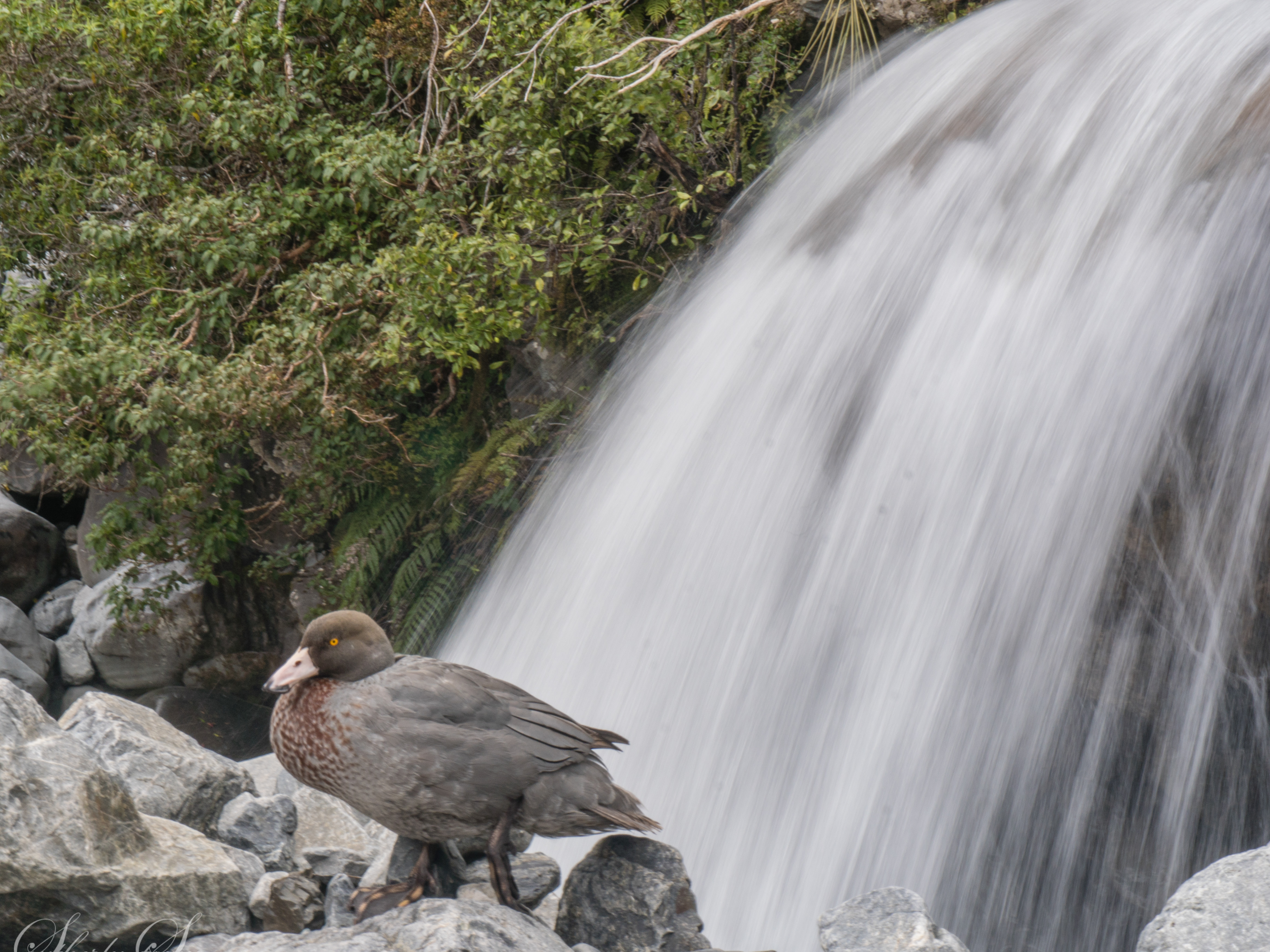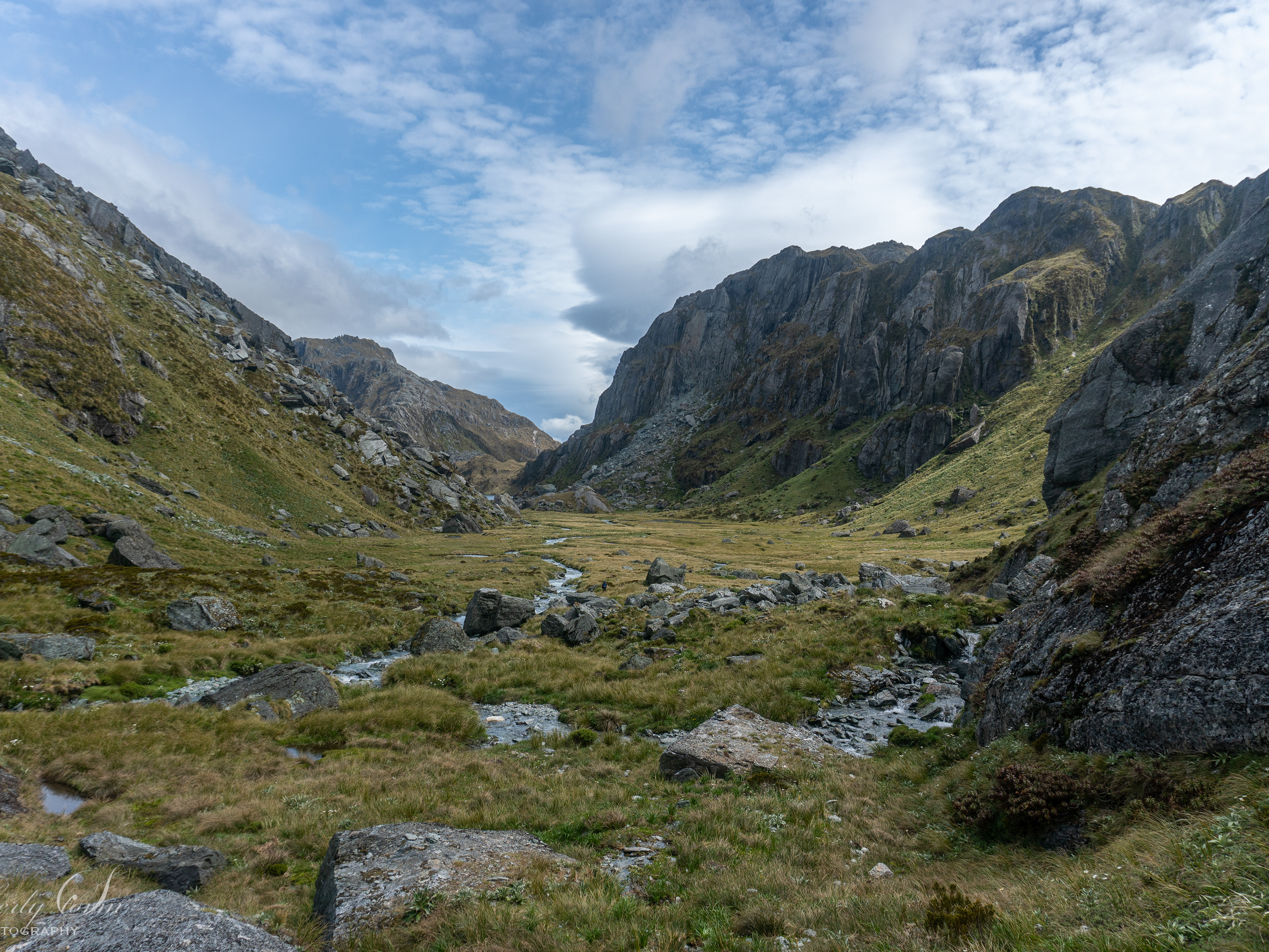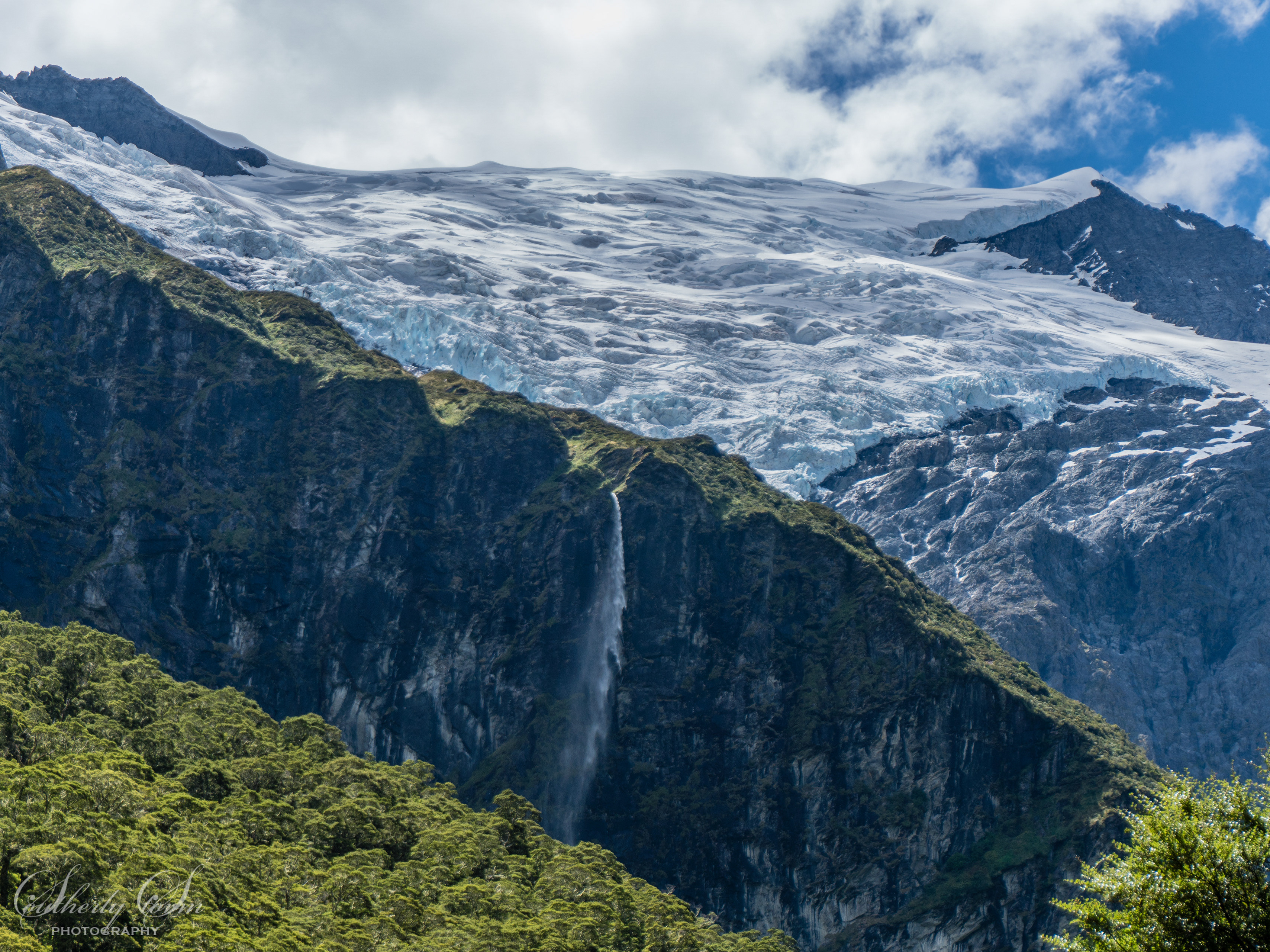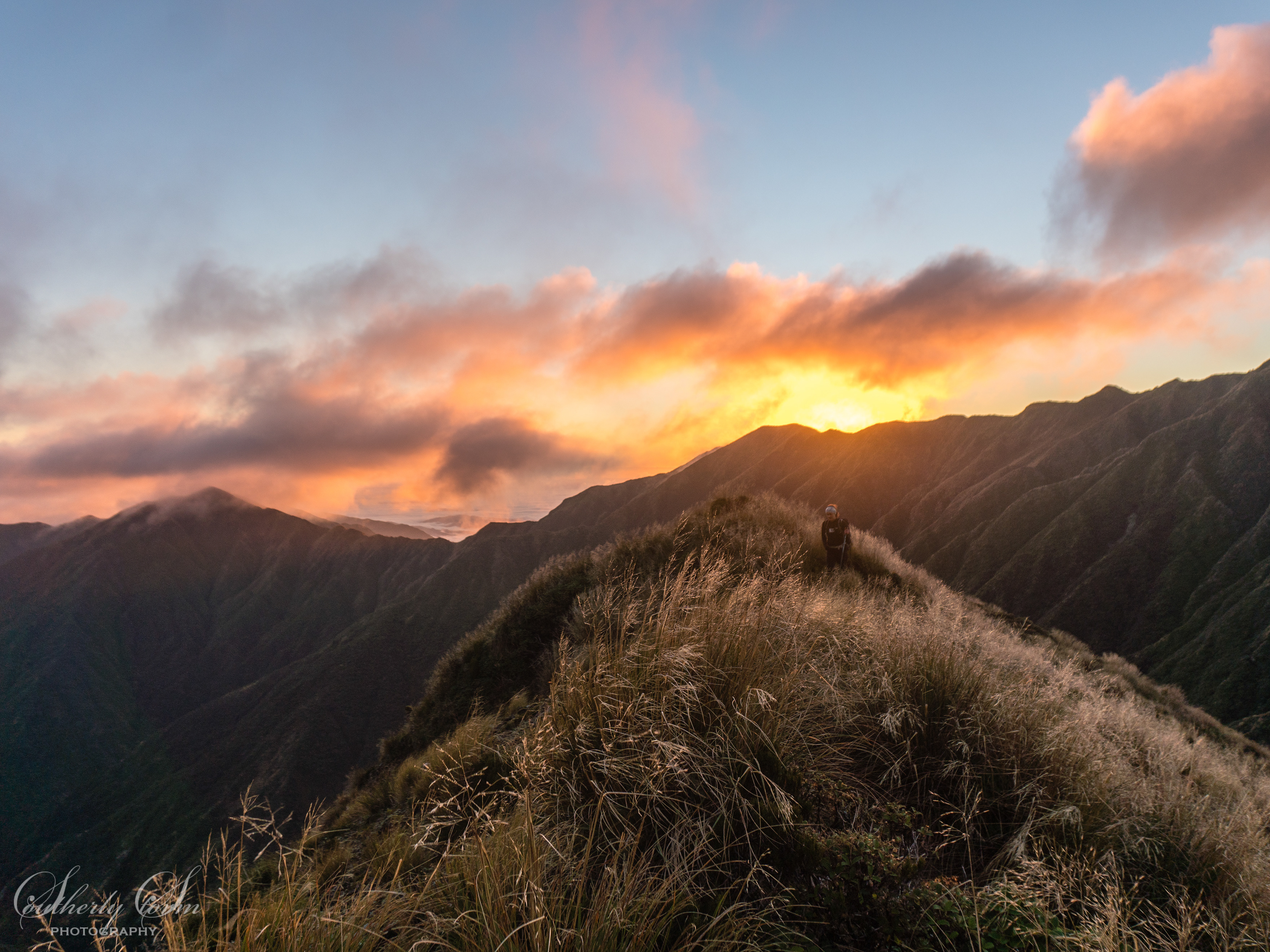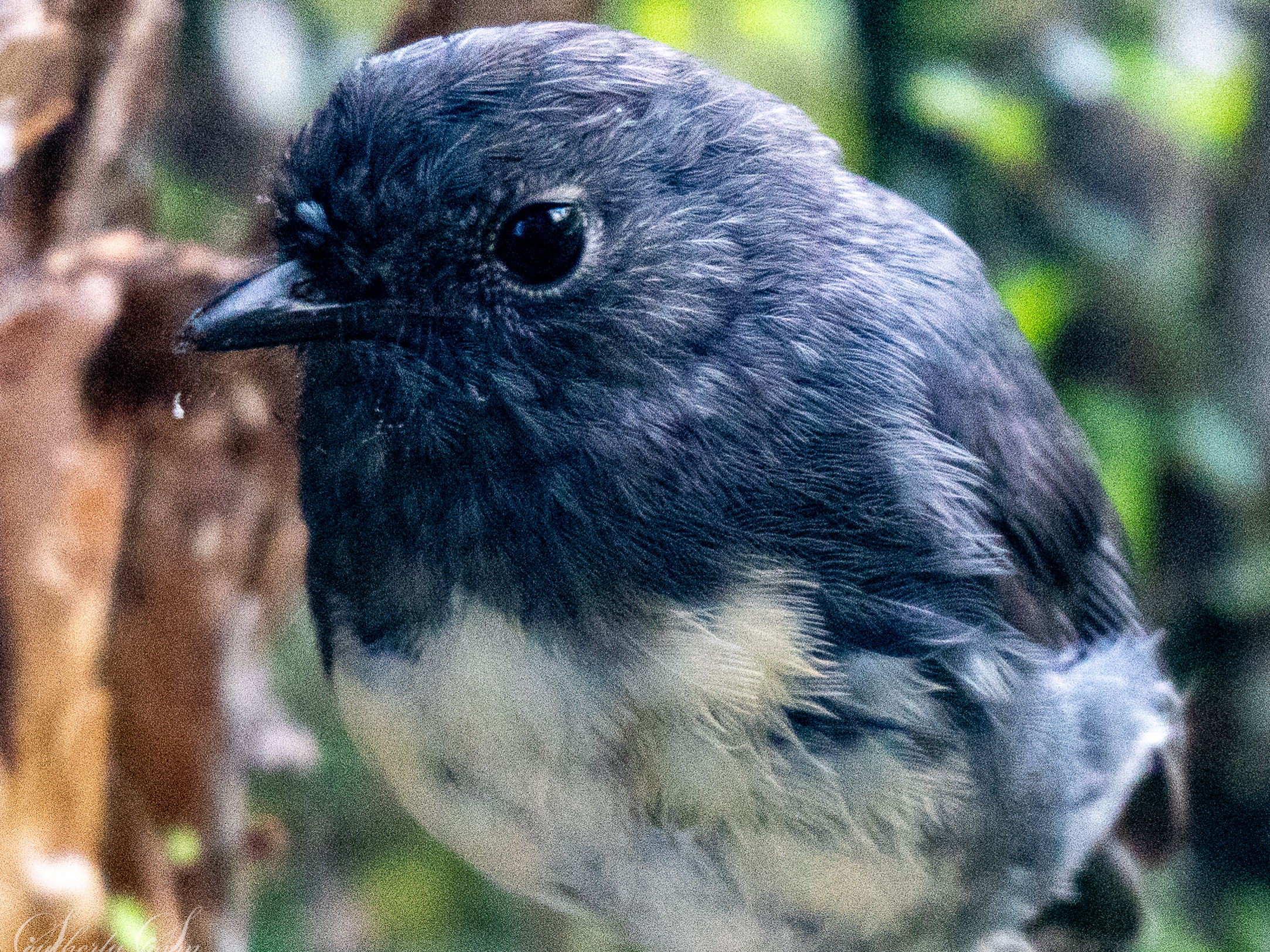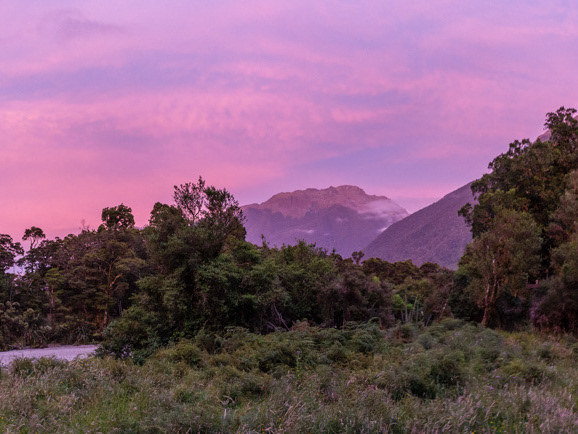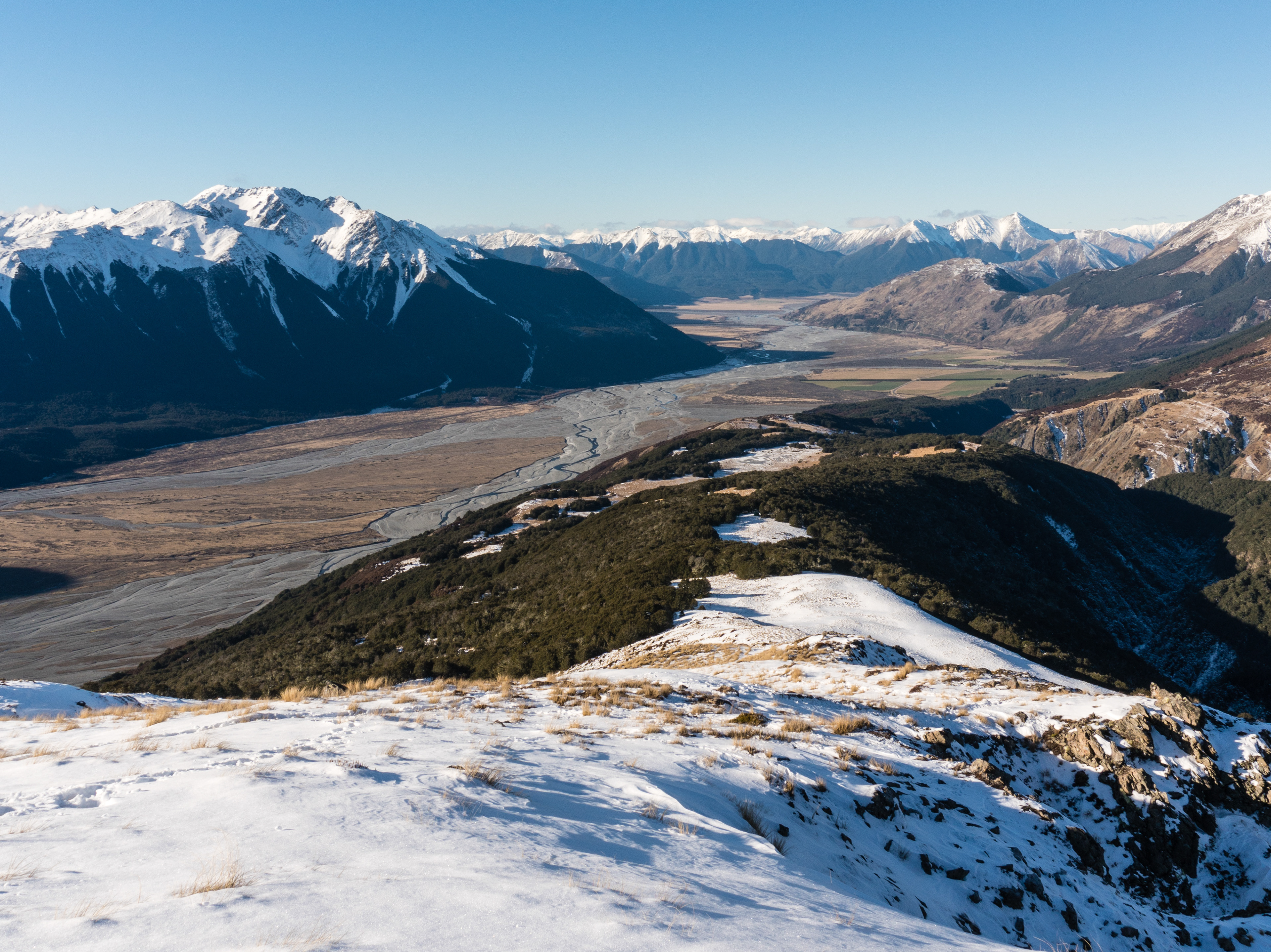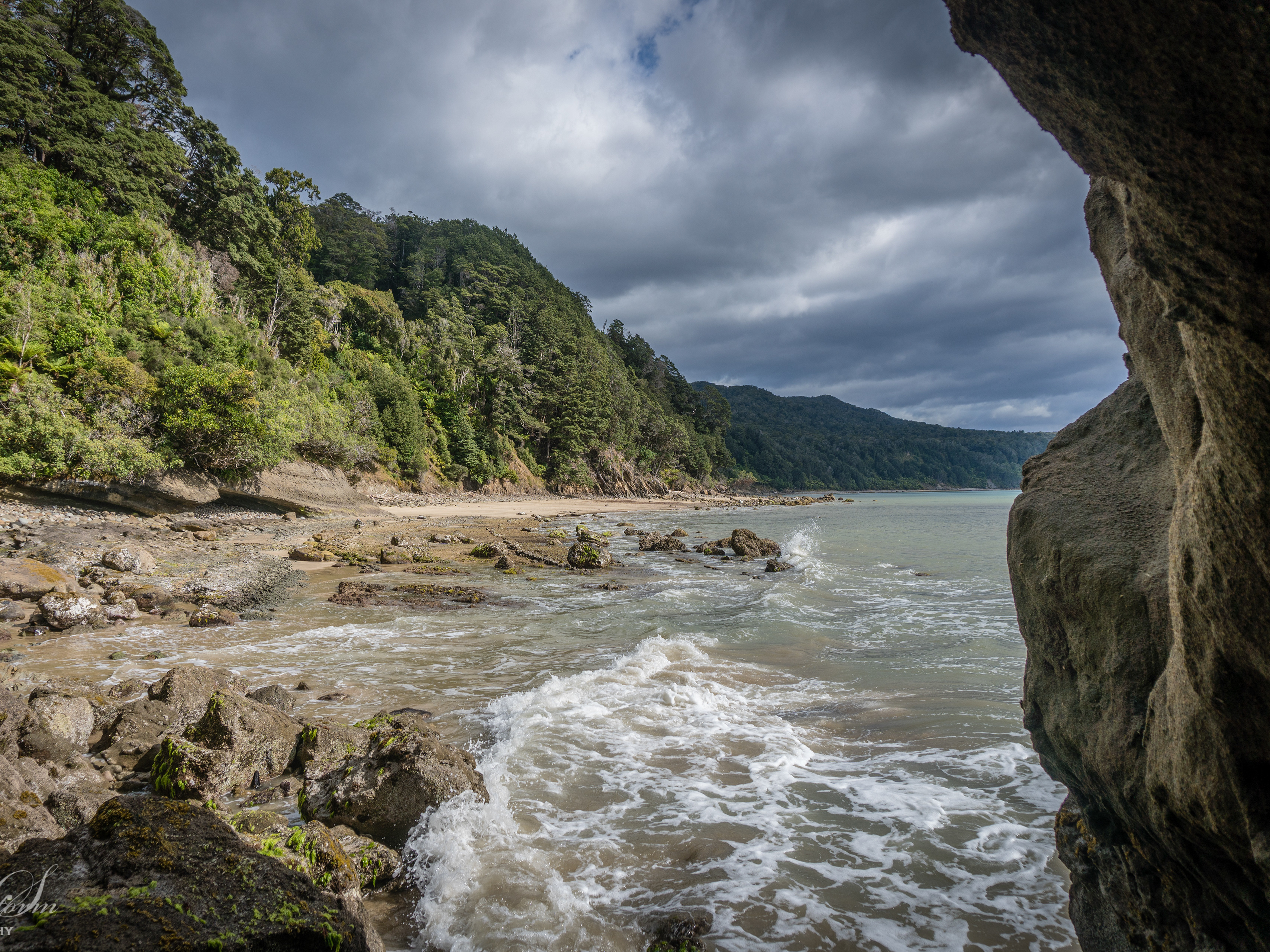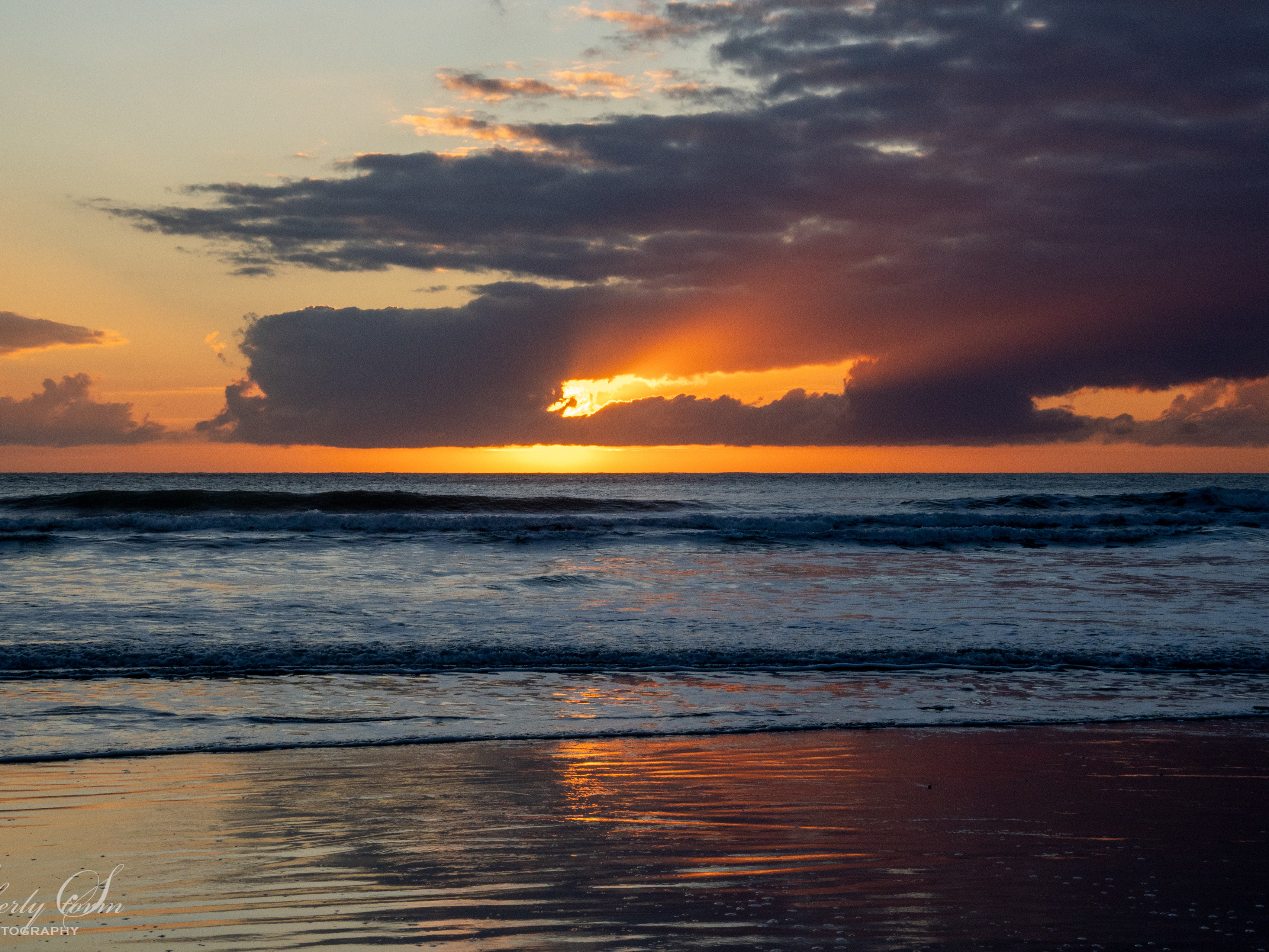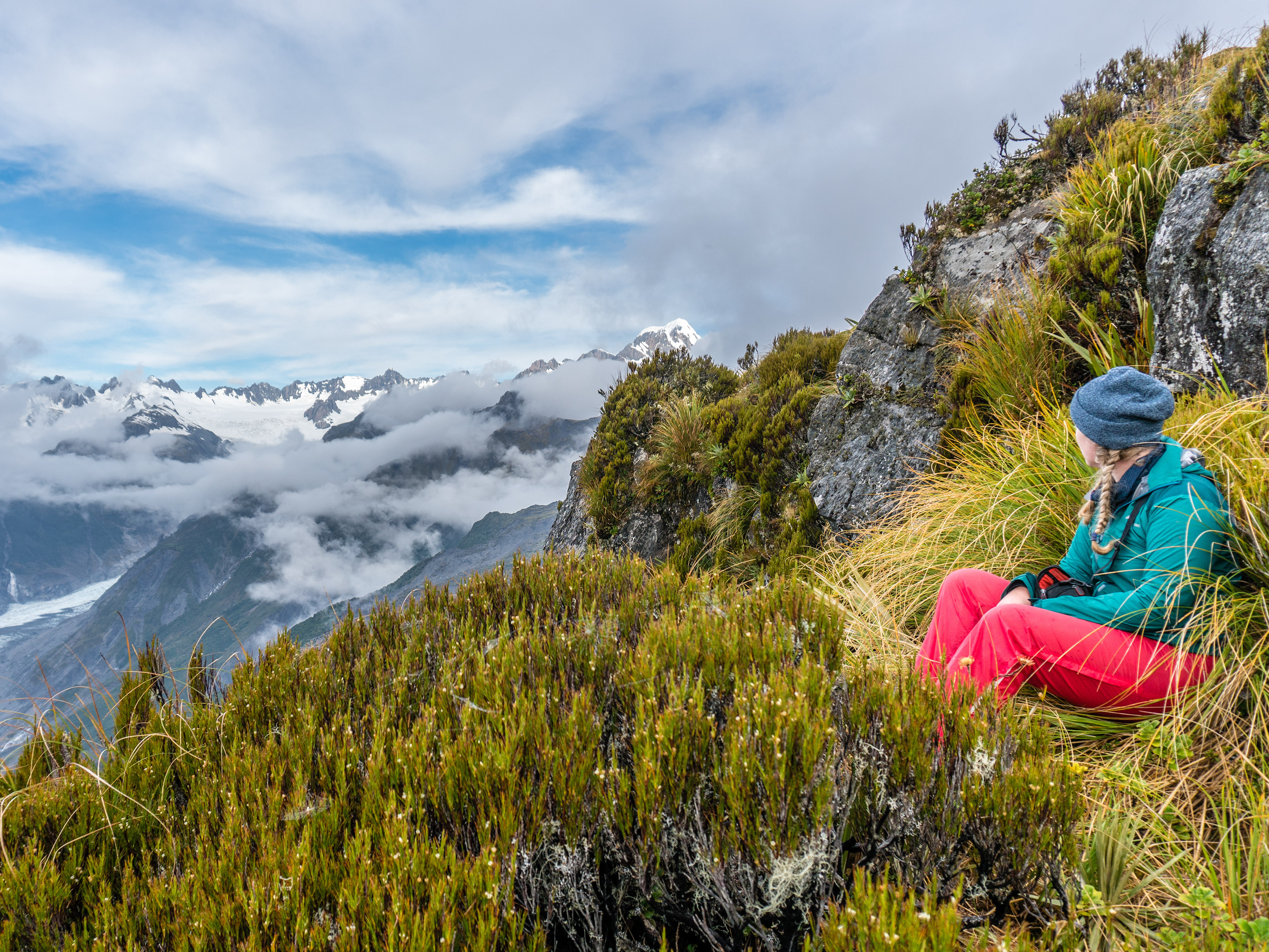Lydia tucked in a Veronika bringing in more layers for our first night in the 'Challenger'
Waking up to this view from the 'Challenger.'
Veronika holds our first customer while Lydia gets the bands on.
The very cold tarn behind the Biv
The 'Challenger' also known as Miller Biv. Our base for this adventure
Cute fledgling kea!
Fledgling and Dad in the snow
Look who's curious about what I'm doing!
Dad looks on while a fledgling investigates
Baby kea nap time
... and back to investigating
Who's a handsome chappy?
Feeding time with dad
Looks yummy!
Note the bands on dad, he's met us before
Cute moment
All finished
Now I'm handsome and well-fed in the snow!
Got something to say
Dad shows us his back and the family heads off shortly after, the continuing snow sprinkles make it less than ideal catch weather anyway.
View from Miller Peak
It's pretty nice up here
Lydia on Miller Peak checking for radio signals from birds in the area
Beautiful black and white mountains of Fiordland
Lydia demonstrates just how cold it is on the summit.
View down to Lake Te Anau
Veronika finds somewhere scenic to hang out and try to warm up a little
I steal Veronika's spot and use it to my own advantage!
So many beautiful tarns on the way back to the 'Challenger'
Reflective too
Lydia and Veronika enjoy a much more pleasant time on the summit of Miller Peak
Beautiful Mt Cook Lily
Although this partial bloom so full of promise is potentially even more beautiful
Panorama of Lake Te Anau and the Stuart Mountains from Miller Peak
This fledgling is keen to play
He's already been to see us the day before though, hence the bands
Ready to fly
Veronika setting up for our evening catch session
A group of kea - dad and two fledglings - colluding as to how best to destroy our tents
Thinking hard about it
The whole family together - we never managed to get the mum though
Kea coming in to land
A pair of cuties - two fledgling kea
Still cute
Beautiful evening light in the Murchison mountains
Lydia handling the communications
Debating where we are going to go, given that we are going to run out of daylight, in Snag Burn Hut
Lydia and Veronika look after our lunchtime visitor while being eaten alive by the sandflies
Mt Cook Lillies in the valley
Beautiful view down the valley
View of the lake below Mt Max, our campsite was near the outlet
Darkest Weka I've ever seen - shame I couldn't get a better photo of it
Lovely lighting at the end of the day
Mt Max
I always think mountains are better with mood and clouds
Early light on the hills
Leaving our lake outlet campsite
Lydia and Veronika look out over the Snag Burn, our lake campsite in the background
Tarn on the saddle
Heading into the bush for a short stretch before going back up into the basin visible straight ahead
Absolutely magical forest
Beautiful waterway
Such wonderful light
Just a magical lunch spot
Emerging from the bush in the next basin over
Camp for the night
Pink clouds of sunset
I've been trying for a while to get a good image of a tent lit up at night - hopefully, this will be the first of many to come!
View from the saddle above camp back over to Miller Peak and the basin where our base hut it
Miller Biv in the beautiful evening light
Looking back at the saddle of where we came from
Wonderful evening light
The offending tarn in front of the hut
See I'm not making it up it is called the 'Challenger'
Tired-looking Mt Cook Lily
Interesting cloud formations - or just ones that indicate a shift in the weather
Sunset is always better when the weather is changing
Loving the cloud-bow at sunset
I love clouds

